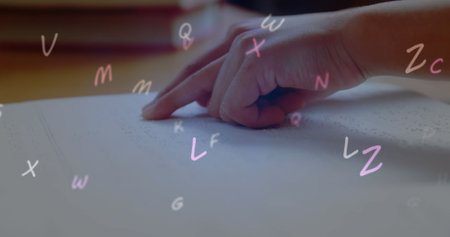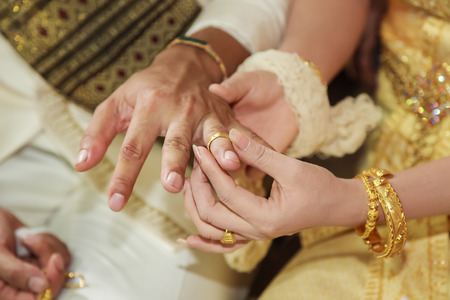Introduction to Marriage Lines in Indian Palmistry
In the rich tapestry of Indian palmistry, marriage lines, also known as union lines or affection lines, hold a distinctive place. Situated just below the base of the little finger on the edge of the palm, these delicate markings are traditionally believed to reveal insights into one’s marital prospects, relationship patterns, and emotional bonds. In India, where marriage is regarded not only as a personal commitment but also as a sacred social contract rooted in cultural values, interpreting marriage lines has been an age-old practice among palmists and seekers alike. These lines are often examined during family gatherings, matrimonial consultations, and even temple fairs, reflecting their significance within Indian society. Whether approached with scientific curiosity or spiritual reverence, the study of marriage lines offers a window into how relationships are perceived through the lens of destiny and tradition. Understanding their interpretations helps individuals navigate societal expectations regarding love, partnership, and harmony in married life—a theme deeply woven into the fabric of Indian culture.
2. Decoding Line Breaks and Double Lines: Indian Interpretations
In Indian palmistry, the marriage line—also known as the union line or affection line—is a subtle yet significant marking on the palm that reveals insights into one’s marital life and relationships. When it comes to breaks or double lines along the marriage line, classical Indian texts such as “Hasta Samudrika Shastra” and modern interpretations by renowned Indian palmist Cheiro provide nuanced meanings that are deeply rooted in Indian cultural context.
Breaks in the Marriage Line: Classical Insights
A break in the marriage line is traditionally considered an indicator of disruptions, misunderstandings, or separations in marital life. According to Indian palmistry literature, such breaks do not always indicate divorce but often point towards periods of emotional distance, temporary separation, or significant challenges that test the relationship. The location of the break also matters:
| Position of Break | Common Interpretation (Indian Context) |
|---|---|
| Near start (towards palm edge) | Problems before or soon after marriage; family interference common in Indian joint families |
| Middle of the line | Mid-marriage crisis; could be due to external stressors like career or migration |
| Near end (towards little finger) | Late-life discord; sometimes linked with children’s issues or social expectations |
Double Lines: The “Sister Line” Phenomenon
The presence of a double marriage line, often referred to as a “sister line,” has been interpreted variously across India. In many classical sources, this signifies protection from misfortune or reconciliation after disputes. It may also indicate a strong emotional bond that survives challenges or denotes two significant relationships in one’s lifetime. Here is how these are generally understood:
| Type of Double Line | Indian Palmistry Meaning |
|---|---|
| Parallel and close together | Loyalty and support between partners; possibility of remarriage with same person after separation—a theme seen in Indian mythology and popular cinema |
| Diverging lines at one end | Emotional involvement with another person; sometimes interpreted as extramarital interest or long-term platonic friendship impacting marriage |
| One faint and one deep line | An unfulfilled love or a relationship overshadowed by societal/family obligations—a common narrative in traditional arranged marriages |
Cultural Relevance in Indian Society
The nuanced interpretation of these markings aligns with India’s collective cultural experiences, where familial approval, social reputation, and astrology play integral roles in marital decisions. Palmists often cross-reference these signs with other aspects on the hand for a holistic reading, respecting both ancient texts and evolving contemporary realities.

3. Common Patterns and Their Cultural Meanings
Indian palmistry, or Hast Rekha Shastra, places significant emphasis on the marriage line—also known as the union or relationship line—found beneath the little finger on the palm. Over generations, certain patterns in these lines have been frequently observed and are deeply interpreted within Indian culture. Understanding these traditional readings sheds light not only on personal relationships but also on broader societal expectations around marriage.
Single Clear Line
A single, unbroken marriage line is often regarded as a sign of a stable, lifelong union. In Indian tradition, this is considered highly auspicious, hinting at a harmonious marital life with minimal obstacles. Elders might interpret such a line as an indication of early marriage, strong family ties, and enduring compatibility between partners.
Double Lines (Parallel Lines)
The presence of two parallel lines under the pinky is commonly seen in Indian hands. Traditionally, these double lines are interpreted in multiple ways. Some palmists believe they suggest the possibility of remarriage or a significant secondary relationship, while others interpret them as an indicator of intense emotional attachments outside of marriage. In some communities, it may also be seen as a sign of having to make difficult choices between love and duty—a recurring theme in Indian social narratives.
Breaks in the Marriage Line
Breaks or gaps in the marriage line are often associated with temporary separations or periods of discord within married life. According to many Indian palmists, such breaks do not always mean permanent separation or divorce; instead, they might signify challenges that test the resilience of the marital bond. The context—such as how close the break is to the heart line or its depth—is crucial for further interpretation by an experienced reader.
Chains, Forks, and Islands
Other patterns like chains (a series of small links), forks (a split at one end), or islands (small ovals along the line) carry their own cultural implications. Chains are sometimes read as indications of multiple minor misunderstandings, while forks could mean a couple’s paths diverging after years together. Islands may point to periods of stress—perhaps due to family pressure or societal expectations—that are unique to Indian marital contexts.
The Importance of Context
It is essential to remember that interpretations in Indian palmistry are rarely absolute. The overall reading considers not just the marriage line but other factors such as the heart line, fate line, and even prevailing customs in specific regions. These patterns hold deep-rooted significance in Indian society, reflecting both individual experiences and collective beliefs about love, partnership, and destiny.
4. Role of Astrology and Family Customs in Palmistry Practice
In Indian culture, palmistry does not exist in isolation; rather, it is deeply entwined with astrology (Jyotish Shastra) and diverse regional family customs. When interpreting marriage lines—especially breaks or double lines—practitioners often integrate astrological charts and consider familial expectations to provide a holistic matrimonial reading.
Integration of Astrology and Palmistry
Astrologers frequently examine the alignment of planets such as Venus, Mars, and Jupiter alongside palm features to assess compatibility and marital prospects. For instance, if the marriage line shows a break but the natal chart indicates a strong seventh house (house of marriage), the reading may be moderated with optimism.
| Aspect | Astrology | Palmistry |
|---|---|---|
| Marriage Timing | Dasha periods, planetary transits | Position/length of marriage line |
| Marital Harmony | Placement of Venus & Mars | Smoothness or breaks in line |
| Possibility of Second Marriage | Double indications in chart | Double marriage lines |
Influence of Regional Customs and Family Beliefs
The interpretation of marriage lines can vary across different Indian communities. In some South Indian traditions, even a faint second marriage line might be interpreted as potential for remarriage or obstacles, while North Indian customs may give more weight to horoscope matching than palm signs alone. Family elders often participate in readings, ensuring that cultural values are respected.
Common Matrimonial Beliefs Integrated with Palmistry
- Kundali Milan (horoscope matching) is considered essential along with palm analysis before finalizing alliances.
- Certain auspicious days or rituals may be recommended to counteract negative indications from both astrology and palmistry.
- Family priests or astrologers may combine findings from both disciplines to guide families on remedies or precautions.
Summary Table: How Customs Shape Palm Readings
| Region/Community | Cultural Influence on Reading |
|---|---|
| North India | Kundali takes precedence; palmistry used for confirmation |
| South India | Palm marks closely analyzed; subtle lines scrutinized more intensively |
| Bengal & East India | Focus on timing via astrology; lines interpreted within astrological context |
| Western India (Gujarat/Maharashtra) | Elder consultation; ritualistic remedies for negative signs in both systems |
This synthesis of palmistry, astrology, and local customs creates a uniquely Indian approach to interpreting marriage lines, especially when dealing with breaks or double lines. The guidance provided by practitioners aims to balance individual destiny with societal expectations and family harmony.
5. Real-life Narratives and Popular Indian Beliefs
In Indian society, palmistry is not merely a mystical art but an integral part of cultural narratives, especially when it comes to matters of marriage. Stories and anecdotes about the marriage line—whether marked by breaks or double lines—are often shared within families and among friends. Many Indians recall elders examining palms at weddings or during matchmaking, interpreting these lines with a blend of tradition and personal experience.
One popular belief is that a break in the marriage line signifies temporary separation or challenges, such as misunderstandings between spouses or periods spent apart due to work or family obligations. Anecdotes abound of couples who have faced such trials but ultimately reconciled, echoing the idea that breaks do not necessarily mean permanent endings. In some households, elders recount stories of relatives whose marriage lines were broken yet who enjoyed long-lasting relationships after overcoming initial hurdles.
The presence of double marriage lines is also surrounded by widespread beliefs and stories. Some interpret double lines as an indication of remarriage or significant relationships outside the primary marriage. However, another common view in Indian palmistry circles is that double lines can represent strong emotional support from a partner, symbolizing deep connections rather than infidelity or separation. People often share tales of individuals with double lines leading harmonious married lives, attributing their marital stability to mutual understanding and support.
Furthermore, Indian cinema and literature frequently reference these palmistry interpretations, reinforcing their place in popular culture. Characters consult palmist experts for guidance on matrimonial prospects, and plotlines sometimes revolve around the revelations found in the marriage line. These stories contribute to the collective consciousness regarding palmistry’s role in shaping expectations about marriage and relationships in India.
Ultimately, whether viewed through anecdotal evidence or cultural storytelling, the significance attached to breaks or double lines in the marriage line reflects both age-old traditions and evolving societal attitudes toward love and partnership. While some still rely heavily on palmistry for guidance, others see these signs as part of a larger tapestry of beliefs that enrich India’s diverse approach to marriage.
6. Cautions, Misconceptions, and Guidance
Addressing Common Misconceptions in Indian Palmistry
When interpreting marriage line breaks or double lines, it is crucial to be aware of the widespread misconceptions that exist within Indian palmistry. Many believe that a broken or doubled marriage line always signals divorce or marital unhappiness. However, experienced Indian palmists caution that such interpretations are oversimplified. The cultural context of marriage in India—where arranged marriages, family involvement, and social expectations play significant roles—means that the lines can reflect not only personal relationships but also societal influences. Palmistry should not be seen as a deterministic science; instead, it offers insights that require holistic consideration.
Regional Variations in Interpretation
India’s diverse regions have unique approaches to reading marriage lines. In North India, for example, a break might be interpreted with more concern than in South India, where some traditions see breaks or double lines as indicators of life transitions rather than specific relationship crises. Some regional schools of palmistry even consider factors like the prominence of the Mount of Mercury or the presence of supporting lines before making any predictions about marriage outcomes. Therefore, seekers should always clarify which tradition or school their palmist follows to better understand the interpretation provided.
Guidance for Seekers: Consulting Indian Palmists
If you are consulting an Indian palmist about your marriage lines, approach the session with an open mind and realistic expectations. Remember that palmistry is one of many tools used for self-understanding and guidance; it is not a substitute for personal effort or open communication within relationships. Ask questions about the context behind any interpretation—such as cultural, familial, or astrological factors—that may influence your marriage lines. A responsible palmist will encourage you to view these markings as part of a broader life journey rather than fixed predictions.
Conclusion: Embracing Wisdom with Prudence
In summary, while the marriage line remains a fascinating subject in Indian palmistry, seekers should exercise caution against rigid beliefs and sensational conclusions. By recognising regional differences and approaching consultations with discernment, individuals can gain meaningful insight without unnecessary anxiety. Ultimately, understanding your marriage lines can offer guidance—but true harmony in relationships depends on respect, effort, and mutual understanding beyond what is etched on your palm.


